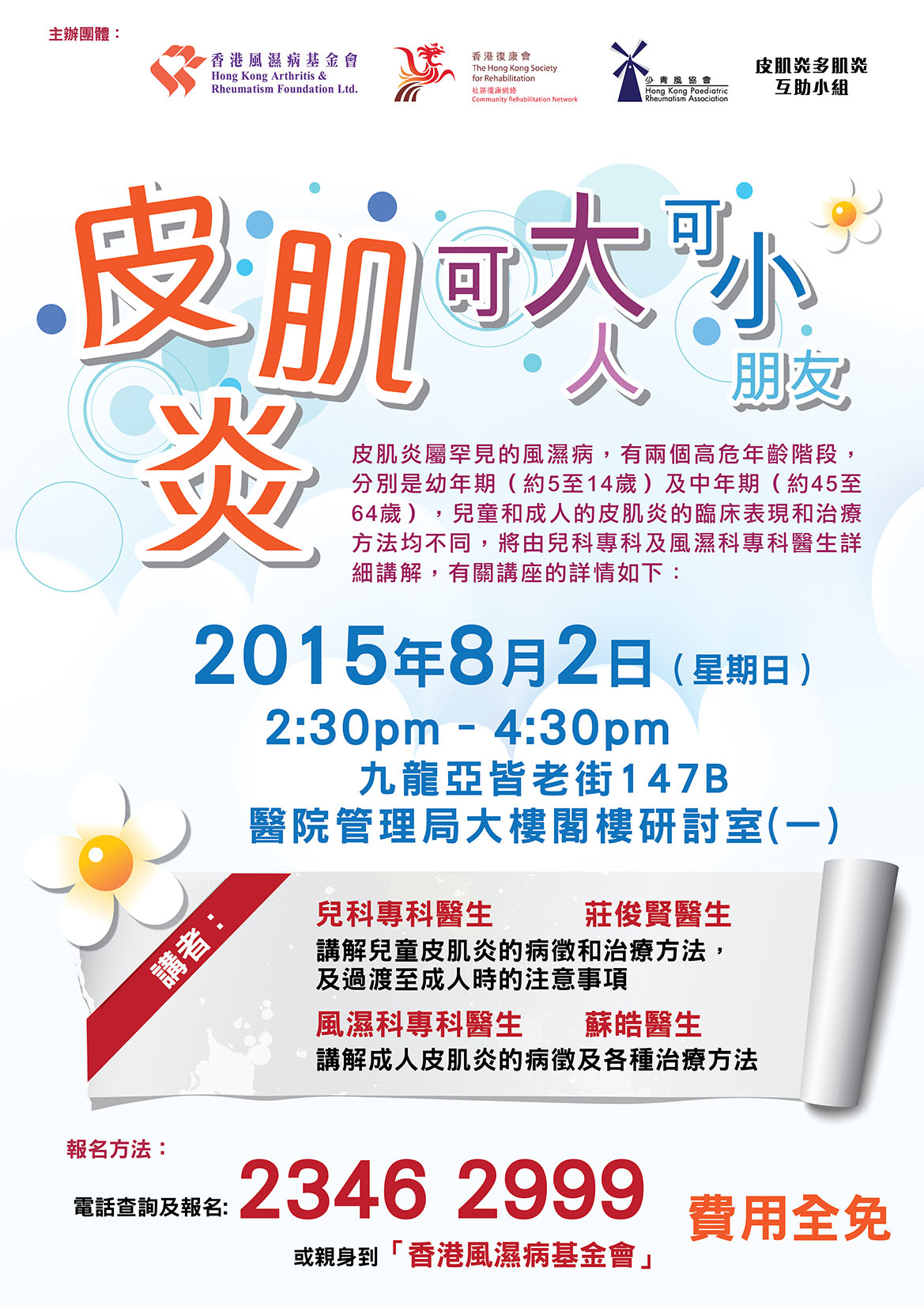
Educational Talk – Dermatomyositis & Juvenile dermatomyositis
2nd August 2015
Educational Talk – Dermatomyositis & Juvenile dermatomyositis was taken part in Seminar Room 1, M/F, Hospital Authority Building, Kowloon on 2nd August 2015. The talk aimed to enhance people’s understanding on the diagnosis and treatment of dermatomyositis. There were 53 participants in total.
The talk was started by Dr. CHONG Chun Yi, a specialist in Paediatrics, to explain the common symptoms and diagnosis of juvenile dermatomyositis. Other than malar rash, muscle fatigue was also quite common which mainly affected joints and muscles in upper arms or legs and shoulder. Patients’ photos with symptoms were displayed to enhance participants’ understanding on the expression of these common symptoms. Calcinosis, around 30% of patients having this complication, was explained in the hope of increasing participants’ awareness. Dr. CHONG reminded that patients should apply sufficient and appropriate sun protection to prevent worsening the rash. Besides, physical exercises were significant to improve patient’s condition. Lastly, Dr. CHONG shared some figures related to juvenile dermatomyositis in Hong Kong. Local girls had higher prevalence of the illness than boys. The most common expression was rash and muscle fatigue.
Apart from this, the talk was continued by Dr. SO Ho, a specialist in Rheumatology, to explain the definition of adult dermatomyositis. The cause of the illness was unknown. It was rare as 5 new cases would be found in every one million population. Diagnosis of dermatomyositis was similar to those of juvenile dermatomyositis but the complications of the disease were slightly different. Muscles of oesophagus might be affected and thus resulted in dysphagia. Also, pulmonary fibrosis was usually found in patients with dermatomyositis. Dr. SO reminded participants to be aware of their body condition. Different medications and non-medication treatment were introduced. Dr. SO emphasized those were the most common ways of treatment but might not be suitable to all individuals. Thus, patients should pay fully attention on their own condition and seek help from medical personnel if necessary.
Representative from Dermatomyositis and Polymyositis Mutual Group shared her experiences of rehabilitation and introduced the Group’s objectives and activities. She urged patients to join and develop the spirit of mutual aid together.
Most participants were satisfied with the arrangement and content of the talk. They were interested in the relationship of the two diseases as well as the checking methods and hoped to participate to similar activities in the future.












